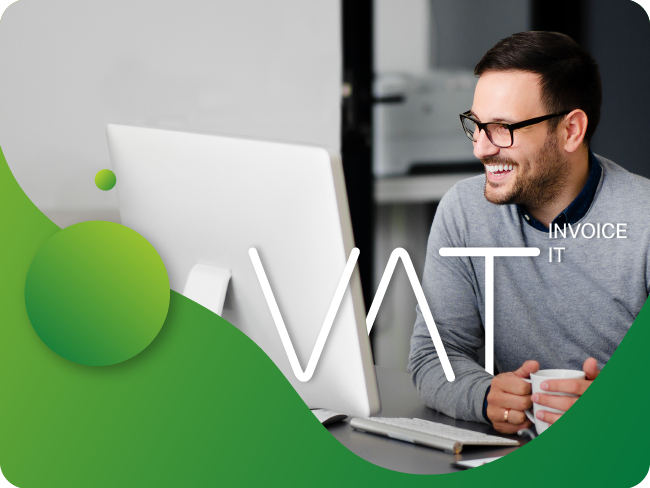E-invoicing and VAT: How to prepare for the new compliance paradigm
VAT e-invoicing and real-time reporting are powerful weapons in the fight against fraud and tax evasion. We discuss why tax offices are turning to a digital compliance paradigm and electronic invoicing, and what it means for your business.

VAT e-invoicing and real-time reporting are powerful weapons in the fight against fraud and tax evasion. We discuss why tax offices are turning to a digital compliance paradigm and electronic invoicing, and what it means for your business.
Closing the VAT gap
According to the European Commission's recent VAT Gap Report, EU countries lost an estimated €134 billion in VAT in 2019. EU member state authorities have vowed to take action to reduce the VAT gap.
But what is the VAT gap and how does it affect your business?
The VAT Gap report measures the difference between the expected VAT revenue and the amount actually collected. There are a number of reasons for the discrepancy, including VAT fraud and tax evasion.
Tax authorities take the gap very seriously, because VAT is an increasingly important source of revenue for authorities. In response, governments have introduced new VAT regulations to make fraud and VAT avoidance more difficult. They have also introduced sophisticated measures to monitor VAT compliance.
The new tax compliance paradigm
Tax authorities around the world have introduced a range of new technology-based compliance obligations for businesses. For instance, UK businesses need to comply with the software requirements of Making Tax Digital. And many regulators across the EU, and around the world, have mandatory e-invoicing requirements.
These technologies help authorities track transaction data and identify anomalies. They also present a number of challenges to businesses. Most fundamentally, VAT-registered companies must now, in many cases, employ the correct technology to comply with the basic requirements of VAT e-invoicing and other types of VAT reporting.
Moreover, the filing format and processes are different in each country. For instance, there’s SAF-T in France, Poland and other jurisdictions. Then there’s SII in Spain and various other models in different countries. Businesses that have VAT obligations in multiple countries thus need adaptable technology that meets all modern VAT compliance standards.
Noncompliance is riskier than ever
Tax regulators’ use of technology means that they are more likely than ever to detect fraudulent or improper transactions.
Moreover, in cases where a business accidentally breaches VAT regulations, there’s an increased likelihood that authorities will notice the anomaly. VAT non-compliance could result in fines, penalties and intrusive audits.
In this environment, prevention is undoubtedly better than cure. A significant number of businesses have global VAT obligations they are not even aware of. Many companies will therefore benefit from a careful analysis of their global tax compliance obligations and VAT processes.
The benefits of compliance technology
The new compliance paradigm is also a powerful opportunity for businesses. Technology actually makes VAT compliance simpler and more affordable. But there’s an important caveat.
Research shows that automation makes VAT compliance faster and less expensive. But only if fully compatible technology is used. Businesses, therefore, need to ensure they are using the right software for a VAT invoice in order to get the most out of the digital revolution in VAT.
Do all companies have e-invoicing obligations?
E-invoicing generally applies to business-to-business transactions. Not all countries have e-invoicing requirements. And where obligatory e-invoicing applies, it may not be obligatory for all businesses. Indeed, many tax authorities have instituted a phased approach to e-invoicing. In such cases, e-invoicing is initially only mandatory for large firms and B2B transactions.
Companies that operate in multiple countries should therefore seek advice on changing e-invoicing compliance rules, as local authorities update their regulations.
Automation and VAT recovery
VAT invoice automation technology does more than facilitate e-invoicing. Powerful new VAT software transforms the VAT recovery process.
Reclaiming VAT often involves painstakingly going through a large quantity of invoices. By automating the process, businesses save time, eliminate human error and reduce their administrative burden. It’s more efficient and ensures that you both maximise reclaim opportunities and ensure 100% compliance while streamlining the process through a structured invoice format.
A digital platform for filing VAT returns
Traditionally, VAT compliance has always been complex and time-consuming. Automation makes the process quick and easy.
Businesses that operate in multiple jurisdictions need dynamic, dedicated technology that helps them meet all local compliance requirements.
VAT IT’s specialised cloud-based platform is part of our end-to-end one-stop VAT recovery and compliance solution.
VAT IT’s technology is fully compatible with all global e-invoicing requirements. Plus our expert advisory team is always on hand to provide strategic advice and assistance.
Related blogs
VAT refund Tool kit
Contact Us
Come explore your refund possibilities.
Chat with us today.
Find out how you could turn company spend into income
-Jul-28-2023-12-14-09-7876-PM-3.png?width=939&name=VATIT%20CTA%20Compliance%20(1)-Jul-28-2023-12-14-09-7876-PM-3.png)




